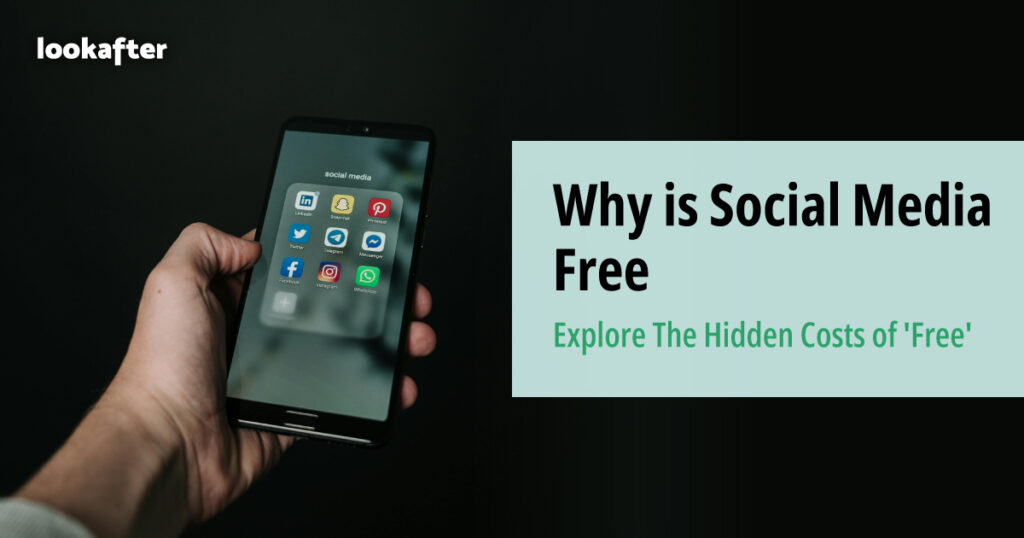Home > Empowering Tips > Why is Social Media Free: Explore The Hidden Costs of ‘Free’

Have you ever wondered why social media accounts are free? It’s a question that might not cross your mind as you scroll through your news feed, like posts, or share updates with friends. However, the truth behind the “free” nature of social media platforms is more complex than meets the eye. In this article, we’ll delve into why social media accounts are free and what that really means for users.
First and foremost, it’s essential to understand that when something is offered to you for free, you’re not the customer – you’re the product. This concept is particularly true in the realm of social media. When you sign up for platforms like Facebook, Twitter, Instagram, or Snapchat without having to pay a fee, you are essentially exchanging your personal data and attention for access to their services.
So, how exactly do social media companies profit from offering their services for free?
1. Advertising Revenue: The primary source of income for most social media platforms is advertising. These platforms collect vast amounts of data about their users – your likes, interests, demographics, browsing history, and even your location. They then use this data to create detailed profiles of you, which are incredibly valuable to advertisers. By allowing advertisers to target specific demographics and interests, social media platforms can charge premium rates for ads, making billions of dollars in revenue each year.
2. Data Monetization: Apart from targeted advertising, social media companies also monetize your data in other ways. They might sell anonymized or aggregated data to third-party companies, such as market research firms or advertisers, who use it to analyze trends, conduct research, or refine their products and services. Your data is a valuable commodity in the digital age, and social media companies are keenly aware of its worth.
3. Premium Features and Services: While the core functionalities of social media platforms are free, many offer premium features or services for a fee. These may include advanced analytics for businesses, enhanced customization options, or ad-free experiences. By offering these premium options, social media companies can generate additional revenue streams while still keeping their basic services free for the majority of users.
4. Partnerships and Collaborations: Social media companies often enter into partnerships or collaborations with other businesses or organizations. These partnerships can take various forms, such as sponsored content, co-branded campaigns, or integration with third-party services. These collaborations not only provide additional revenue but also contribute to the overall growth and sustainability of the platform.
While the “free” model of social media certainly benefits users in terms of accessibility and affordability, it also raises significant concerns about privacy, data security, and the commodification of personal information. As users, we need to be aware of the trade-offs involved in using these platforms and take proactive steps to protect our privacy and digital well-being.
Here are some practical steps you can take to safeguard your privacy when using social media platforms:
- Review Privacy Settings: Regularly review and adjust your privacy settings on social media platforms to control who can see your posts, profile information, and other content.
- Limit Sharing of Personal Information: Avoid sharing sensitive or personally identifiable information such as your home address, phone number, email address, or financial details on social media.
- Manage Friend and Follower Lists: Regularly review your friend or follower lists and remove or block individuals whom you do not know or trust to limit access to your information.
- Be Cautious with Location Sharing: Disable location sharing or use it selectively, only with trusted contacts, to avoid disclosing your whereabouts to strangers or potential threats.
- Use Strong, Unique Passwords: Use strong, unique passwords for your social media accounts and enable two-factor authentication whenever possible to add an extra layer of security.
- Be Selective with Third-Party Apps: Be cautious when granting permissions to third-party apps or services that integrate with your social media accounts, and review permissions carefully to limit access to your personal information.
- Think Before You Click: Be cautious when interacting with content on social media, including links, posts, and advertisements, and avoid clicking on suspicious links or engaging with unfamiliar accounts or messages to prevent privacy breaches or scams.